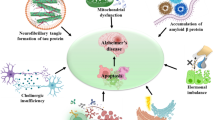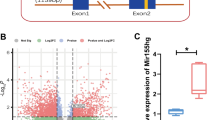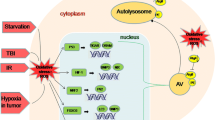Abstract
Paeoniflorin (PF) has been reported to possess neuroprotective influences on cognitive dysfunction illness. In current research, we attempted to probe into the protective influences of PF against H2O2-induced damage and the underlying regulating mechanisms on hippocampal HT-22 cells. HT-22 cells were pretreated with PF, and then induced by H2O2. Afterwards, the influences of PF pretreatment were examined using CCK-8 assay, apoptosis assay, western blot and ROS assay, respectively. In addition, the expression of microRNA-135a (miR-135a) was analyzed and altered by qRT-PCR and cell transfection, respectively. After overexpression of miR-135a, the effects of miR-135a mimic on cell functions were detected again. Moreover, influences of H2O2, PF and miR-135a overexpression on JAK2/STAT3 and ERK1/2 signal pathways were further investigated. Further experiments verified that PF pretreatment alleviated H2O2-induced oxidative stress through increasing cell viability, inhibiting cell apoptosis, reducing ROS generation and activating JAK2/STAT3 and ERK1/2 pathways. Besides, expression of miR-135a was declined by PF pretreatment. Whereas, miR-135a mimic abrogated the protective effects triggered by PF pretreatment. These results indicated that PF can alleviate H2O2-induced oxidative stress by down-regulation of miR-135a via activation of JAK2/STAT3 and ERK1/2 pathways.






Similar content being viewed by others
References
Saine K, Cullum CM, Martin-Cook K, Hynan L, Svetlik DA, Weiner MF (2002) Comparison of functional and cognitive donepezil effects in Alzheimer's disease. Int Psychogeriatr 14(2):181–185
Ittner LM, Gotz J (2011) Amyloid-beta and tau–a toxic pas de deux in Alzheimer's disease. Nat Rev Neurosci 12(2):65–72. https://doi.org/10.1038/nrn2967
Tan CC, Yu JT, Wang HF, Tan MS, Meng XF, Wang C, Jiang T, Zhu XC, Tan L (2014) Efficacy and safety of donepezil, galantamine, rivastigmine, and memantine for the treatment of Alzheimer's disease: a systematic review and meta-analysis. JAD 41(2):615–631. https://doi.org/10.3233/jad-132690
Zhao L, Chang Q, Huang T, Huang C (2018) Paeoniflorin inhibits IL1betainduced expression of inflammatory mediators in human osteoarthritic chondrocyte. Mol Med Rep 17(2):3306–3311. https://doi.org/10.3892/mmr.2017.8222
Zhang J, Dou W, Zhang E, Sun A, Ding L, Wei X, Chou G, Mani S, Wang Z (2014) Paeoniflorin abrogates DSS-induced colitis via a TLR4-dependent pathway. Am J Physiol Gastrointest Liver Physiol 306(1):G27–G36. https://doi.org/10.1152/ajpgi.00465.2012
Ye S, Mao B, Yang L, Fu W, Hou J (2016) Thrombosis recanalization by paeoniflorin through the upregulation of urokinasetype plasminogen activator via the MAPK signaling pathway. Mol Med Rep 13(6):4593–4598. https://doi.org/10.3892/mmr.2016.5146
Li H, Jiao Y, Xie M (2017) Paeoniflorin ameliorates atherosclerosis by suppressing TLR4-mediated NF-kappaB activation. Inflammation 40(6):2042–2051. https://doi.org/10.1007/s10753-017-0644-z
Wang S, Liu W (2016) Paeoniflorin inhibits proliferation and promotes apoptosis of multiple myeloma cells via its effects on microRNA29b and matrix metalloproteinase2. Mol Med Rep 14(3):2143–2149. https://doi.org/10.3892/mmr.2016.5498
Li W, Qi Z, Wei Z, Liu S, Wang P, Chen Y, Zhao Y (2015) Paeoniflorin inhibits proliferation and induces apoptosis of human glioma cells via microRNA-16 upregulation and matrix metalloproteinase-9 downregulation. Mol Med Rep 12(2):2735–2740. https://doi.org/10.3892/mmr.2015.3718
Zheng YB, Xiao GC, Tong SL, Ding Y, Wang QS, Li SB, Hao ZN (2015) Paeoniflorin inhibits human gastric carcinoma cell proliferation through up-regulation of microRNA-124 and suppression of PI3K/Akt and STAT3 signaling. World J Gastroenterol 21(23):7197–7207. https://doi.org/10.3748/wjg.v21.i23.7197
Yang N, Cui H, Han F, Zhang L, Huang T, Zhou Y, Zhou J (2016) Paeoniflorin inhibits human pancreatic cancer cell apoptosis via suppression of MMP-9 and ERK signaling. Oncol Lett 12(2):1471–1476. https://doi.org/10.3892/ol.2016.4761
Hu ZY, Xu L, Yan R, Huang Y, Liu G, Zhou WX, Zhang YX (2013) [Advance in studies on effect of paeoniflorin on nervous system]. Zhongguo Zhong yao za zhi = Zhongguo zhongyao zazhi = China. J Chin Mater Med 38(3):297–301
Gu X, Cai Z, Cai M, Liu K, Liu D, Zhang Q, Tan J, Ma Q (2016) Protective effect of paeoniflorin on inflammation and apoptosis in the cerebral cortex of a transgenic mouse model of Alzheimer's disease. Mol Med Rep 13(3):2247–2252. https://doi.org/10.3892/mmr.2016.4805
Kapoor S (2013) Neuroprotective effects of paeoniflorin: an emerging concept in neurology. Folia Neuropathol 51(1):92
Li J, Ji X, Zhang J, Shi G, Zhu X, Wang K (2014) Paeoniflorin attenuates Abeta25-35-induced neurotoxicity in PC12 cells by preventing mitochondrial dysfunction. Folia Neuropathol 52(3):285–290
Wang K, Zhu L, Zhu X, Zhang K, Huang B, Zhang J, Zhang Y, Zhu L, Zhou B, Zhou F (2014) Protective effect of paeoniflorin on Abeta25-35-induced SH-SY5Y cell injury by preventing mitochondrial dysfunction. Cell Mol Neurobiol 34(2):227–234. https://doi.org/10.1007/s10571-013-0006-9
Nagaraj S, Zoltowska KM, Laskowska-Kaszub K, Wojda U (2019) MicroRNA diagnostic panel for Alzheimer's disease and epigenetic trade-off between neurodegeneration and cancer. Ageing Res Rev 49:125–143. https://doi.org/10.1016/j.arr.2018.10.008
Liu CG, Wang JL, Li L, Xue LX, Zhang YQ, Wang PC (2014) MicroRNA-135a and -200b, potential biomarkers for Alzheimers disease, regulate beta secretase and amyloid precursor protein. Brain Res 1583:55–64. https://doi.org/10.1016/j.brainres.2014.04.026
Yang TT, Liu CG, Gao SC, Zhang Y, Wang PC (2018) The serum exosome derived microRNA-135a, -193b, and -384 were potential Alzheimer's disease biomarkers. Biomed Environ Sci 31(2):87–96. https://doi.org/10.3967/bes2018.011
Du XJ, Lu JM (2018) MiR-135a represses oxidative stress and vascular inflammatory events via targeting toll-like receptor 4 in atherogenesis. J Cell Biochem 119(7):6154–6161. https://doi.org/10.1002/jcb.26819
Zhong SZ, Ge QH, Li Q, Qu R, Ma SP (2009) Peoniflorin attentuates Abeta((1–42))-mediated neurotoxicity by regulating calcium homeostasis and ameliorating oxidative stress in hippocampus of rats. J Neurol Sci 280(1–2):71–78. https://doi.org/10.1016/j.jns.2009.01.027
Sun X, Li S, Xu L, Wang H, Ma Z, Fu Q, Qu R, Ma S (2017) Paeoniflorin ameliorates cognitive dysfunction via regulating SOCS2/IRS-1 pathway in diabetic rats. Physiol Behav 174:162–169. https://doi.org/10.1016/j.physbeh.2017.03.020
Choi EM, Suh KS, Rhee SY, Kim YS (2014) Inhibitory effect of paeoniflorin on methylglyoxal-mediated oxidative stress in osteoblastic MC3T3-E1 cells. Phytomedicine 21(10):1170–1177. https://doi.org/10.1016/j.phymed.2014.05.008
Fu S, Xu H, Gu M, Liu C, Wang Q, Wan X, Chen Y, Chen Q, Peng Y, Cai Z, Zhou J, Wang Z (2017) Adiponectin deficiency contributes to the development and progression of benign prostatic hyperplasia in obesity. Sci Rep 7:43771. https://doi.org/10.1038/srep43771
Hu W, Feng Z, Levine AJ (2012) The regulation of multiple p53 stress responses is mediated through MDM2. Genes Cancer 3(3–4):199–208. https://doi.org/10.1177/1947601912454734
Adams JM, Cory S (2002) Apoptosomes: engines for caspase activation. Curr Opin Cell Biol 14(6):715–720
Zhang W, Hirschler-Laszkiewicz I, Tong Q, Conrad K, Sun SC, Penn L, Barber DL, Stahl R, Carey DJ, Cheung JY, Miller BA (2006) TRPM2 is an ion channel that modulates hematopoietic cell death through activation of caspases and PARP cleavage. Am J Physiol Cell Physiol 290(4):C1146–C1159. https://doi.org/10.1152/ajpcell.00205.2005
Ahmad W, Ijaz B, Shabbiri K, Ahmed F, Rehman S (2017) Oxidative toxicity in diabetes and Alzheimer's disease: mechanisms behind ROS/ RNS generation. J Biomed Sci 24(1):76. https://doi.org/10.1186/s12929-017-0379-z
Cheignon C, Tomas M, Bonnefont-Rousselot D, Faller P, Hureau C, Collin F (2018) Oxidative stress and the amyloid beta peptide in Alzheimer's disease. Redox Biol 14:450–464. https://doi.org/10.1016/j.redox.2017.10.014
Wilson C, Gonzalez-Billault C (2015) Regulation of cytoskeletal dynamics by redox signaling and oxidative stress: implications for neuronal development and trafficking. Front Cell Neurosci 9:381. https://doi.org/10.3389/fncel.2015.00381
Li H, Zhu YH, Chi C, Wu HW, Guo J (2014) Role of cytoskeleton in axonal regeneration after neurodegenerative diseases and CNS injury. Rev Neurosci 25(4):527–542. https://doi.org/10.1515/revneuro-2013-0062
Song S, Xiao X, Guo D, Mo L, Bu C, Ye W, Den Q, Liu S, Yang X (2017) Protective effects of Paeoniflorin against AOPP-induced oxidative injury in HUVECs by blocking the ROS-HIF-1alpha/VEGF pathway. Phytomedicine 34:115–126. https://doi.org/10.1016/j.phymed.2017.08.010
Li CR, Zhou Z, Zhu D, Sun YN, Dai JM, Wang SQ (2007) Protective effect of paeoniflorin on irradiation-induced cell damage involved in modulation of reactive oxygen species and the mitogen-activated protein kinases. Int J Biochem Cell Biol 39(2):426–438. https://doi.org/10.1016/j.biocel.2006.09.011
Li JZ, Tang XN, Li TT, Liu LJ, Yu SY, Zhou GY, Shao QR, Sun HP, Wu C, Yang Y (2016) Paeoniflorin inhibits doxorubicin-induced cardiomyocyte apoptosis by downregulating microRNA-1 expression. Exp Ther Med 11(6):2407–2412. https://doi.org/10.3892/etm.2016.3182
Shin EA, Sohn EJ, Won G, Choi J-U, Jeong M, Kim B, Kim M-J, Kim S-H (2014) Upregulation of microRNA135a-3p and death receptor 5 plays a critical role in Tanshinone I sensitized prostate cancer cells to TRAIL induced apoptosis. Oncotarget 5(14):5624
Chiba T, Yamada M, Sasabe J, Terashita K, Shimoda M, Matsuoka M, Aiso S (2009) Amyloid-beta causes memory impairment by disturbing the JAK2/STAT3 axis in hippocampal neurons. Mol Psychiatry 14(2):206–222. https://doi.org/10.1038/mp.2008.105
Zheng W, Chong CM, Wang H, Zhou X, Zhang L, Wang R, Meng Q, Lazarovici P, Fang J (2016) Artemisinin conferred ERK mediated neuroprotection to PC12 cells and cortical neurons exposed to sodium nitroprusside-induced oxidative insult. Free Radic Biol Med 97:158–167. https://doi.org/10.1016/j.freeradbiomed.2016.05.023
Chong CM, Zheng W (2016) Artemisinin protects human retinal pigment epithelial cells from hydrogen peroxide-induced oxidative damage through activation of ERK/CREB signaling. Redox Biol 9:50–56. https://doi.org/10.1016/j.redox.2016.06.002
Author information
Authors and Affiliations
Corresponding author
Ethics declarations
Conflict of interest
The authors declare that there are no conflict of interest.
Additional information
Publisher's Note
Springer Nature remains neutral with regard to jurisdictional claims in published maps and institutional affiliations.
Rights and permissions
About this article
Cite this article
Zhai, A., Zhang, Z. & Kong, X. Paeoniflorin Alleviates H2O2-Induced Oxidative Injury Through Down-Regulation of MicroRNA-135a in HT-22 Cells. Neurochem Res 44, 2821–2831 (2019). https://doi.org/10.1007/s11064-019-02904-3
Received:
Revised:
Accepted:
Published:
Issue Date:
DOI: https://doi.org/10.1007/s11064-019-02904-3




